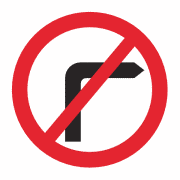I was watching a discussion on a forum recently (frequented by people who are learning to drive).
One thing that has become extremely clear from reading this particular forum is that every single person who ever learns to drive apparently does so as if they are the only person ever to do it. Whenever they ask for advice, all they seem to want to hear is “you will pass” – anything else offends them.
The thread I am particularly referring to here concerns a learner who has apparently been told she “will fail [her] test in a couple of weeks”. She says:
so i’ve been having more lessons recently as my test is fast approaching but it seems to me the more lessons i have the worse i am at driving
i hate roundabouts and always mess up on them
i’m rubbish at bay and parallel parking and my instructor always says things such as ‘you will fail badly for that’ i’m pretty sure he hasn’t taught me anything and my parents have taught me more than him. He just sits reading his magazines in the lesson or booking someone elses driving test whilst i’m driving!any tips for the test? and is the test 1hr or 40 mins?
The comment about her driving instructor reading magazines and taking phone bookings has attracted the expected crop of “experts” (including a driving instructor), who obviously believe every single word without question.
Let me just point something out here. Out of the many hundred of pupils I have taught who have had lessons previously, not one of them has ever answered my question about why they left their last instructor by saying something like:
Well, I messed him around, sometimes couldn’t pay, missed lessons, cancelled at the last minute all the time, and he got fed up with me and told me he couldn’t teach me anymore.
However, I have got rid of loads like that – some of whom I’d picked up after they left their last instructor - and a casual glance at any ADI forum reveals that such pupils are common. And another thing that instructor forums reveal is that stories like this one are also very common:
My last instructor was too friendly, too nasty, shouted at me, turned up late, finished lessons early, didn’t turn up at all, cancelled lessons at the last minute, used his mobile, made comments about other drivers, was racist, didn’t teach me anything, etc.
The number of driving instructors who believe all this stuff without question is huge. They are eager to believe it – I think that’s the main problem.
But back to the original quote – the person adds in a later reply:
thanks guys for your comments
i think i will do the test and see what happens
my instructor does in fact have a high pass rate (god knows how) and ALWAYS brags about it ……maybe i’m just terrible at drivingit’s little things such as not enough mirrors, or signalling too late that i think will mess up my chances
but thanks guys!nervous
and the show and tell me questions i hate so much!
Mmmm. Maybe it isn’t the instructor, then. But she asked for tips for the test. Well, let’s look at the issues:
- can’t do roundabouts
- can’t bay park
- can’t parallel park
- misses “little things” like mirror checks and signalling in time
- has problems with the show-me-tell-me questions
(and let’s not assume she’s an A1 expert at everything else here, because the signs don’t seem to point to it), my advice would be to cancel it, and rebook it after you learn to drive properly. It isn’t rocket science working that one out. Unfortunately, though, such common sense advice is clearly the wrong answer.
The correct answer is provided by someone right at the end of the thread:
Don’t worry! I was told I’d fail 2 days before and I passed
So there you go. Don’t waste your money actually learning – just get someone to tell you you won’t pass, and everything will be all right!
But anyway, the original poster seems happy with any sickly-sweet replies geeing her up – even though she clearly isn’t ready. I can already imagine whose fault it will be if she fails.
Update: And the poster in question passed. So, it just goes to show, doesn’t it?
 The Times & Star can’t resist another dig – more of a case of another spadeful out of the hole it keeps digging for itself – by calling it a “common sense” decision. They wouldn’t know common sense if it cocked its leg against them.
The Times & Star can’t resist another dig – more of a case of another spadeful out of the hole it keeps digging for itself – by calling it a “common sense” decision. They wouldn’t know common sense if it cocked its leg against them. Many, many, many, many, many… you get the idea… years ago, I saw a documentary where they had “transmitted” electricity a few metres across an office to light a bulb. The presenter even stood in the middle to show how safe it was. One thing he didn’t go into detail about, as far as I remember, is how inefficient this was. You might consume 100 watts of power on the transmitter side, but far less than that made it across the void to be used by whatever it was you were powering.
Many, many, many, many, many… you get the idea… years ago, I saw a documentary where they had “transmitted” electricity a few metres across an office to light a bulb. The presenter even stood in the middle to show how safe it was. One thing he didn’t go into detail about, as far as I remember, is how inefficient this was. You might consume 100 watts of power on the transmitter side, but far less than that made it across the void to be used by whatever it was you were powering. A father-of-eight (good start) was involved in a high-speed police chase through Portsmouth at 3.30 in the morning. The chase lasted for two miles and four minutes, and ended with John Williams crashing into a fence.
A father-of-eight (good start) was involved in a high-speed police chase through Portsmouth at 3.30 in the morning. The chase lasted for two miles and four minutes, and ended with John Williams crashing into a fence. A father was being given a driving lesson by his wife, and they had their 4 year old daughter in the back. His satnav – an old one – told him to take a right turn across a 60mph road. Their car was t-boned by a car coming the other way and the 4-year old girl was killed.
A father was being given a driving lesson by his wife, and they had their 4 year old daughter in the back. His satnav – an old one – told him to take a right turn across a 60mph road. Their car was t-boned by a car coming the other way and the 4-year old girl was killed. We love to whinge and whine about all those Johnny Foreigners on our roads, and how bad they are compared to us. Particularly strong feelings (coupled with limited intelligence) might be shown by also flying a Union Jack or George Cross outside their houses.
We love to whinge and whine about all those Johnny Foreigners on our roads, and how bad they are compared to us. Particularly strong feelings (coupled with limited intelligence) might be shown by also flying a Union Jack or George Cross outside their houses. In a nutshell, 60% of those questioned said slow drivers were the biggest cause of stress on the roads, and 45% of those admitted to dangerously attempting to overtake to get past them.
In a nutshell, 60% of those questioned said slow drivers were the biggest cause of stress on the roads, and 45% of those admitted to dangerously attempting to overtake to get past them.